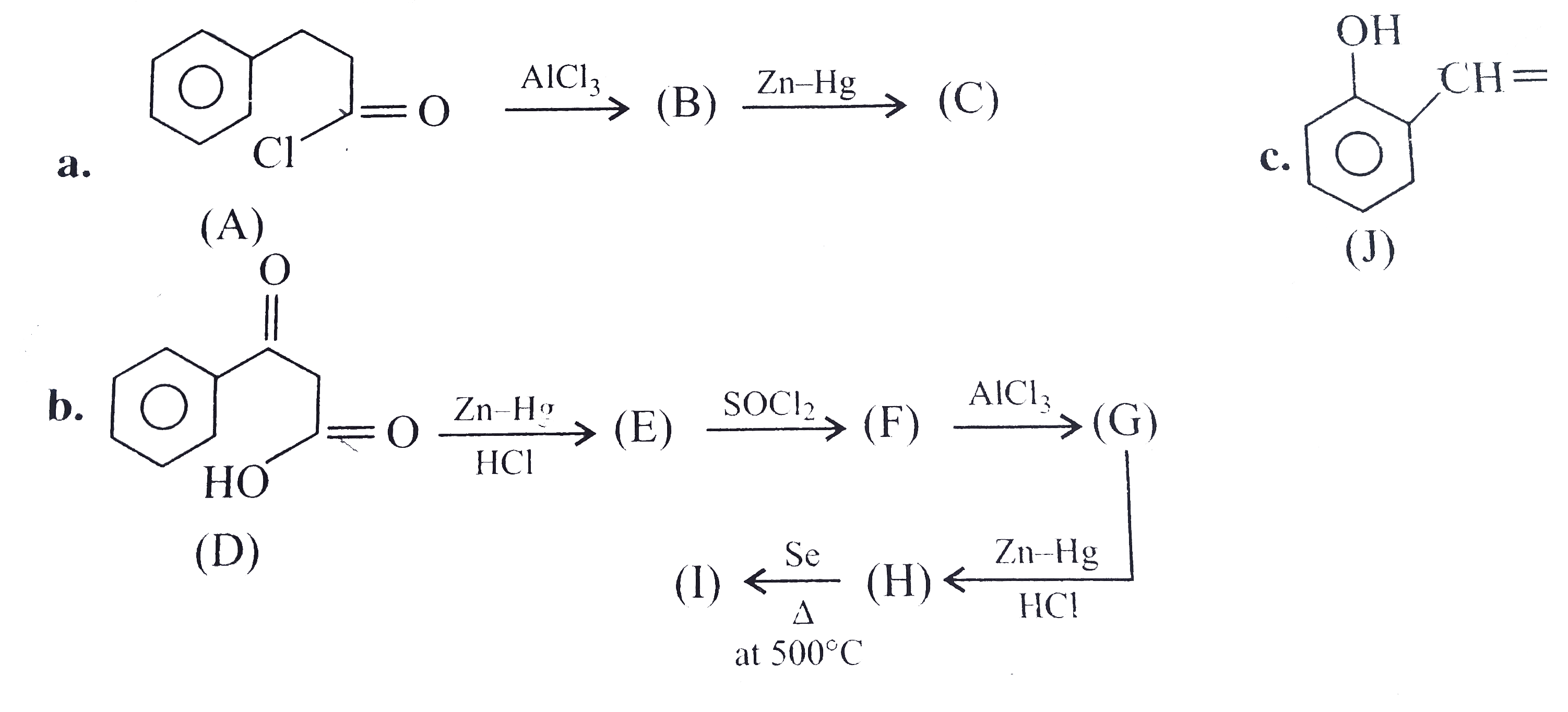In the given reaction sequence
CH3CHO(i)NaCN/HCl−−−−−−−−−−−−→(ii)H2O+(A)Fenton−−−−−−→reagent(B), B will be
Acetic acid
Oxalic acid
Pyruvic acid
Citric acid
The correct Answer is:C
To solve the given reaction sequence, we will break down the steps involved in the transformation of the reactant to the final product.
1. Identify the Starting Material:
The starting material is CH₃CHO, which is acetaldehyde (an aldehyde).
2. Nucleophilic Addition Reaction:
The first step involves the reaction of acetaldehyde with NaCN in the presence of HCl. Here, the cyanide ion (CN⁻) acts as a nucleophile and attacks the electrophilic carbon of the carbonyl group in acetaldehyde.
- The reaction can be represented as:
CH₃CHO+CN⁻→CH₃C(OH)(CN)
- This forms a cyanohydrin intermediate, which is 2-hydroxy-2-methylpropanenitrile.
3. Protonation:
The intermediate formed is then protonated by H₂O (from HCl), leading to the formation of lactic acid (A):
CH₃C(OH)(CN)+H₂O→CH₃C(OH)(COOH)
- This compound is lactic acid (2-hydroxypropanoic acid).
4. Oxidation with Fenton's Reagent:
Next, lactic acid (A) is treated with Fenton's reagent, which is a combination of hydrogen peroxide (H₂O₂) and ferrous iron (Fe²⁺). This reagent is known for its oxidizing properties.
- The oxidation of lactic acid will convert the hydroxyl group (-OH) into a carbonyl group (C=O), resulting in the formation of pyruvic acid (B):
CH₃C(OH)(COOH)Fenton′s−−−−−→CH₃C(=O)COOH
- The product formed is pyruvic acid (2-oxopropanoic acid).
Final Answer:
Thus, the compound B formed in the reaction sequence is pyruvic acid.
The starting material is CH₃CHO, which is acetaldehyde (an aldehyde).
The first step involves the reaction of acetaldehyde with NaCN in the presence of HCl. Here, the cyanide ion (CN⁻) acts as a nucleophile and attacks the electrophilic carbon of the carbonyl group in acetaldehyde.
- The reaction can be represented as:
CH₃CHO+CN⁻→CH₃C(OH)(CN)
- This forms a cyanohydrin intermediate, which is 2-hydroxy-2-methylpropanenitrile.
The intermediate formed is then protonated by H₂O (from HCl), leading to the formation of lactic acid (A):
CH₃C(OH)(CN)+H₂O→CH₃C(OH)(COOH)
- This compound is lactic acid (2-hydroxypropanoic acid).
Next, lactic acid (A) is treated with Fenton's reagent, which is a combination of hydrogen peroxide (H₂O₂) and ferrous iron (Fe²⁺). This reagent is known for its oxidizing properties.
- The oxidation of lactic acid will convert the hydroxyl group (-OH) into a carbonyl group (C=O), resulting in the formation of pyruvic acid (B):
CH₃C(OH)(COOH)Fenton′s−−−−−→CH₃C(=O)COOH
- The product formed is pyruvic acid (2-oxopropanoic acid).
Thus, the compound B formed in the reaction sequence is pyruvic acid.
Topper's Solved these Questions
Similar Questions
Knowledge Check
- Question 1 - Select One
In the given reaction
CH3CHO(i). NaCN/HCl−−−−−−−−−−−−−→(ii). H2O/H⊕/Δ(A)Fenton−−−→reagent(B)
(B) will beAacetic acidBOxalic acidCPyruvic acidDCitric acid - Question 2 - Select One
Identify the compound A and B in the following reaction sequence.
(CH3)2C=ONaCN−−−→HClAH3O+−−−→heatBAA=CH3COOH,B=(CH3CO)2OBA=(CH3)2C(OH)CN,B=(CH3)2C(OH)COOHCA=CH3CHO,B=CH3COOHDA=(CH3)2C(OH)CN,B=(CH3)2C=O - Question 3 - Select One
In the given reaction sequences the final product 'C' is
CH3−CH2−OH(i)KMnO4/−OH/Δ−−−−−−−−−−−−−−−→(ii)H2O+(A)(i)SOCl2−−−−−−−−→(ii)NH3(B)Br2/KOH−−−−−−→(C)AMethylamineBEthylamineCPropylamineDAcetamide
Complete the following reactions:


d. Propane nitrile(N)(i)PhMgBr−−−−−−−−−→(ii)H3O⊕(O)Zn−Hg−−−−−−−→HCl(P)View SolutionIn the reaction sequence
CH3−O∣∣C−H−HCN−−−→.ΘOH(A)H2O/⊕H−−−−→Δ Product is/are :View SolutionIn the given reaction sequence
C6H5CHOH2N−OH−−−−−−→H⊕,ΔAP2O5−−→B
A and B respectively are:View SolutionIn the reaction ,
CH3CHO+HCN→AH+−−−−−→H2OB
The product B is ?View SolutionIn the reaction sequence Cyclohexane
hv/Cl2−−−→(A)alk.KOH/Δ−−−−−−−−→(B)(i)O3−−−−−−−−−→(ii)Zn/H2O. 'C' will beView Solution

